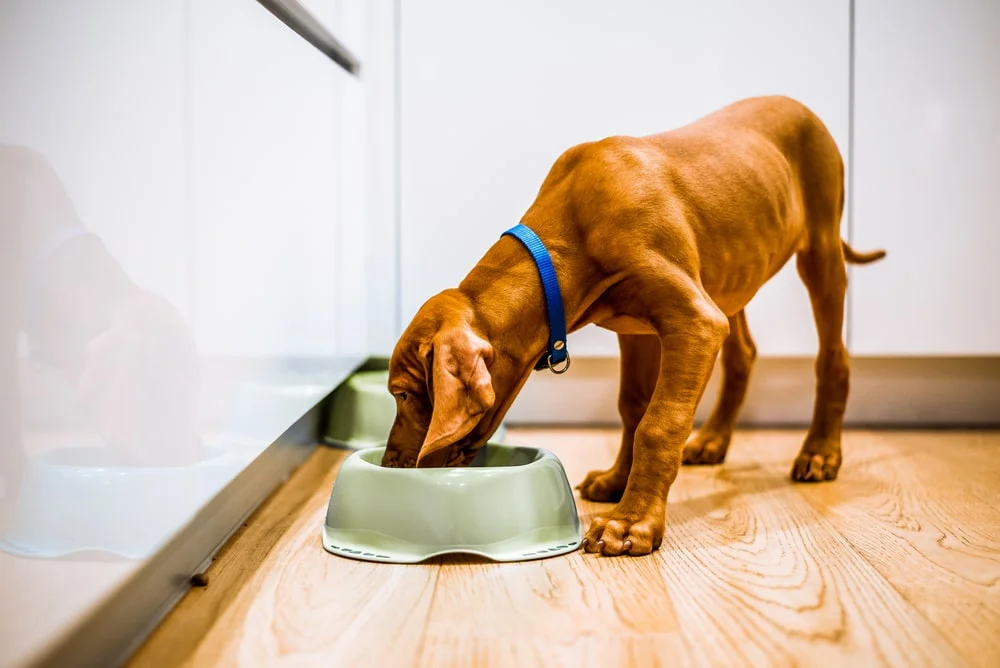PET HEALTH
A common concern many pet owners are faced with is their pet’s weight. But for your dog or cat, being underweight can be just as dangerous as being overweight.
Is your pet a healthy weight? If not, how can you help them reach a more stable number? Keep reading as we review how to tell if your pet is underweight and some strategies to safely help your pet gain the weight he or she needs to put on.
Is My Pet Underweight?
Sometimes, you can tell if an animal is underweight just by looking at them. Their ribs might protrude or their coat looks dull instead of shiny. You may notice that they don’t seem as interested in their food, or perhaps they simply look more slender than they used to.
Other times, you might not realize your pet is underweight until they get on a scale. This is one of many reasons why it’s important to schedule regular checkups at the vet. Your veterinarian will be able to help you determine whether your pet is a healthy weight and what to do if not.
When in doubt, always talk to your vet. Since dog obesity can be very common, it’s easy for overweight dogs to appear normal and healthy dogs to seem too thin — resulting in overfeeding. Speak to your vet for an accurate and unbiased opinion of your dog (or cat’s) weight.
Potential Causes of Your Pet Being Underweight
Being underweight is often a sign of a more serious health problem (for example – your dog could have parasites or an abdominal disease). Diabetes might also be causing your pet to lose weight. Even something as simple as tooth pain can result in weight loss if your pet isn’t able to eat without pain.
Dogs and cats commonly lose a little weight as they grow older and their muscle mass (especially in dogs) declines. Or sometimes, you might simply be underfeeding your pet without realizing it — whether you’re not providing enough food at each meal or you’re not feeding your pet enough times throughout the day.
Some pets lose weight as a result of losing their appetite. This will often occur during and/or after a stressful situation, such as a new pet joining your family or your family moving houses. If your vet can’t find anything physically wrong with your dog or cat, low appetite might be the primary issue.
Why Being Underweight is Dangerous
Being underweight can cause potentially dangerous health problems in pets, just like it can for humans.
If your dog or cat is underweight, their body isn’t getting an adequate amount of nutrients to fuel them through the day. This can cause quality of life issues, such as always being cold, and lead up to more major problems such as an increased risk of diabetes or heart disease.
It’s not safe for your pet to be underweight. If you and your veterinarian have determined that your dog or cat’s weight is too low, it’s important to immediately take steps to find out the root cause of the weight loss. Then do what you can to help your pet regain the weight.
Safely Helping Your Pet Gain Weight
You can help your dog or cat gain weight by feeding them more often throughout the day and/or giving them larger amounts of food at a time (if your vet signs off on this plan). Consistently giving your dog or cat more food will help them steadily gain the weight they need.
If appetite loss is a factor, do your best to make your pet’s food as appealing as you can. Canned food mixed with tuna or an egg, for example, might appear more appetizing than plain dry kibble. This is a good way to get in more calories, too.
Purchasing a different type of pet food or more high-quality dog or cat food could also help. The calories in different kinds of pet food vary, and the ingredients do, too. Switching pet food brands might make a big difference as you try to help your dog or cat gain weight. Your vet is a good resource to talk to as you research the different kinds of pet food available.
Being underweight can be dangerous for your pet. By working with your vet and following their recommended strategies, you can help your dog or cat gain the weight they need so they can stay healthy and strong.

